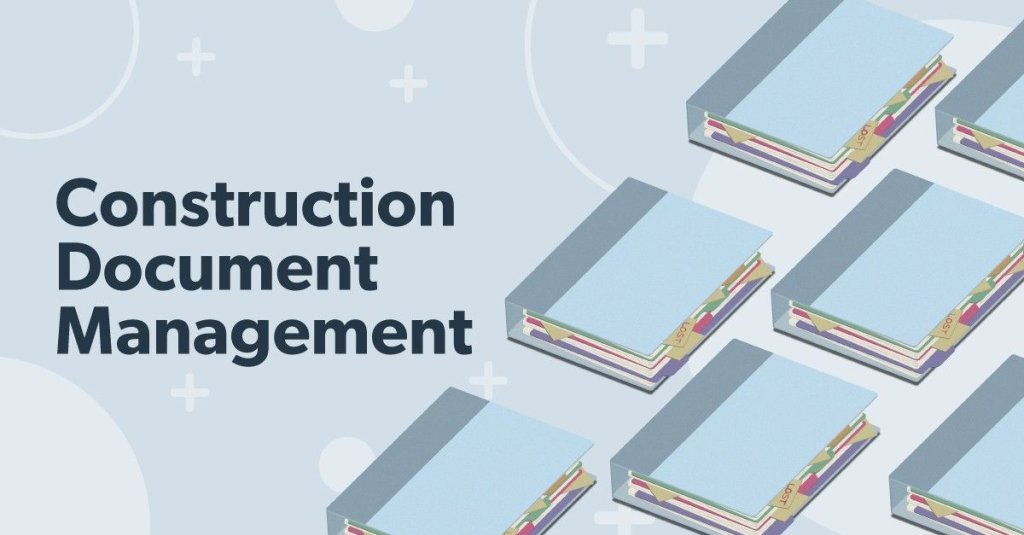Understanding Organization: Boost Effectiveness with Construction Document Management
Understanding Organization: Boost Effectiveness with Construction Document Management
Blog Article
Optimizing Task Collaboration: Designer's Ideal Practices in Construction Paper Administration
In the elaborate realm of architectural jobs, the reliable monitoring of building and construction files stands as a keystone for success. Architects, with their thorough focus to information and innovative design options, are tasked with coordinating a symphony of stakeholders, resources, and timelines. Amidst this complexity exists a critical inquiry: just how can engineers enhance cooperation procedures to enhance job outcomes? By exploring crucial strategies such as leveraging cloud-based systems, establishing durable interaction protocols, and making sure data safety and security, engineers can elevate their document administration techniques to new heights.
Leveraging Cloud-Based Systems
Leveraging cloud-based platforms is an essential approach for modern engineers in maximizing construction record administration processes. By transitioning from standard paper-based systems to cloud options, engineers can enhance collaboration, improve document availability, and improve general project efficiency. Cloud-based systems supply engineers the capacity to store, share, and upgrade construction papers in real-time, making sure that all team members have accessibility to the most present details no matter of their place. This access promotes smooth interaction and coordination among task stakeholders, resulting in fewer errors and delays in the building and construction procedure.
Furthermore, cloud-based systems give a safe and secure atmosphere for storing sensitive task details, using security, regular backups, and user permission setups to secure information stability. Architects can also benefit from the scalability of cloud remedies, permitting them to change storage space capacity and performance based upon task demands. On the whole, leveraging cloud-based systems equips designers to maximize their building document administration processes, driving better cooperation, performance, and success in their tasks.
Executing Version Control Systems
Having established the advantages of cloud-based systems in construction document administration, architects can currently improve their record control procedures by executing Variation Control Solution. Version Control Solution (VCS) are vital tools that track changes in documents, making sure that employee are constantly dealing with the most up to date and most accurate info. By carrying out VCS, engineers can maintain a centralized repository where all task records are kept, allowing smooth collaboration while minimizing the risk of mistakes and variation disputes.
One trick benefit of Version Control Equipment is the capacity to track the full background of paper changes, enabling users to change to previous variations if needed (construction document management). This function is especially important in construction jobs where design iterations and alterations prevail. In addition, VCS helps with better interaction among employee by giving a clear audit route of that made certain adjustments and when they were made. This openness not just boosts liability but additionally assists in solving disagreements or disparities that might emerge during the job lifecycle.
Establishing Communication Protocols
To ensure reliable and efficient job coordination, architects should develop clear and durable communication protocols within their construction document management procedures. Interaction protocols specify the approaches, regularity, and networks through which team participants exchange details, updates, and comments. One essential aspect of developing these methods is establishing a central communication system where all project-related conversations and record sharing can occur. This system can be a task monitoring software application, e-mail navigate to this site threads, or cloud-based storage space services. By establishing guidelines on how information is disseminated and exactly my website how employee interact with each various other, designers can improve the flow of data and stop miscommunications or hold-ups in the construction procedure.
Moreover, interaction procedures must also consist of standards on just how to handle problems, adjustment orders, and urgent problems that may develop during the project lifecycle. Developing a structured technique to interaction guarantees that all stakeholders are on the exact same web page, advertises transparency, and ultimately contributes to the effective completion of the construction job.
Using BIM Software Program for Coordination
BIM software application plays a critical role in boosting sychronisation among task staff member in the construction industry. Structure Details Modeling (BIM) assists in cooperation by giving a centralized platform where engineers, engineers, professionals, and various other stakeholders can collaborate in a collaborated fashion. Through BIM software program, task participants can access and upgrade a shared design that includes in-depth details about the structure layout, construction elements, and job timetables.

Moreover, BIM software program enables real-time cooperation and interaction amongst staff member, despite their physical place. Via cloud-based BIM systems, task stakeholders can access the most recent project information, track changes, and make informed decisions without delay. In general, leveraging BIM software for sychronisation enhances project effectiveness, productivity, and ultimately brings about successful task outcomes.
Ensuring Information Safety and Compliance
In the realm of construction file monitoring, protecting data honesty and ensuring regulative compliance are vital factors to consider for architects and various other job stakeholders. Architects need to carry out robust safety measures to safeguard sensitive job details from unauthorized more information access or breaches. Using protected cloud storage space solutions with security methods and access controls can assist reduce dangers connected with data burglary or loss. On a regular basis upgrading software program and systems, performing safety and security audits, and providing staff training on data protection finest techniques are necessary action in maintaining a secure environment for construction record administration.

Final Thought
In final thought, architects can maximize task cooperation in construction record administration by leveraging cloud-based systems, implementing version control systems, developing interaction methods, utilizing BIM software program for control, and making certain information protection and conformity. These finest practices aid streamline the construction procedure, enhance interaction among job stakeholders, and boost efficiency in project distribution. By complying with these guidelines, engineers can properly take care of building files and assist in successful project outcomes.
Through BIM software application, project participants can access and update a common design that has comprehensive details about the structure style, building components, and project schedules.
Via cloud-based BIM platforms, job stakeholders can access the latest project info, track changes, and make notified decisions without delay - construction document management. Overall, leveraging BIM software program for coordination boosts job efficiency, performance, and eventually leads to successful project end results
In final thought, architects can enhance job cooperation in building document management by leveraging cloud-based systems, applying version control systems, developing interaction protocols, making use of BIM software for control, and guaranteeing data safety and security and compliance. These best practices help streamline the building procedure, improve communication amongst task stakeholders, and enhance performance in job distribution.
Report this page